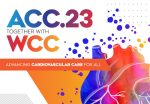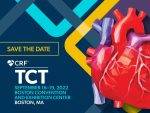Socioeconomic status (SES) has been linked to recurrent atherosclerotic cardiovascular disease events (rASCVD) after myocardial infarction (MI). However, patients with low SES are underrepresented in most randomized studies. This may be largely due to a higher incidence of metabolic syndrome, insufficient use of recommended medication, such as statins, for secondary prevention and insufficient participation in...
The most read scientific articles in interventional cardiology in March on our website
Below, we share March’s most read scientific abstracts in interventional cardiology at solaci.org. ACC 2023 | YELLOW III Study. Effect of Evolocumab on Coronary Plaque Characteristics in Stable Coronary Artery Disease Dr. Kini presented the results of the YELLOW III Study where she analyzed the effect of evolocumab on coronary plaque in patients with stable...
ACC 2023 | COORDINATE-DIABETES
Approximately only 2.7% of all diabetic patients with ischemic heart disease in the United States receive optimal treatment consisting in high doses of statins (ACEI/ARAII) or “cardio-stable” antihyperglycemic agents such as SGLT2I and GLP-1RA (three of them). Of the population, 37.4% does not use any medication. Randomization was conducted at the healthcare facility level, rather...
ACC 2023 | YELLOW III Study. Effect of Evolocumab on Coronary Plaque Characteristics in Stable Coronary Artery Disease
Dr. Kini presented the results of the YELLOW III Study where she analyzed the effect of evolocumab on coronary plaque in patients with stable coronary artery disease. The study included 137 patients who underwent coronary angioplasty to the culprit vessel and endovascular imaging (OCT, NIRS/IVUS) to non-obstructive lesions (30%-50%). If their plaque was lipid-rich (defined...
Relationship Between Medical Treatment and Long-Term Clinical Results after Peripheral Vascular Intervention
Peripheral arterial disease (PAD) is one of the consequences of atherosclerosis, and it can cause pain in the limbs or tissue loss. Its treatment includes lifestyle changes such as exercise, statin therapy, antiplatelet therapy, antihypertensive medication (mainly ACE inhibitors or ARBs), and revascularization strategy. One in five patients with PAD will have experienced acute myocardial...
TCT 2022 | PCSK9 Inhibitor in Patients with STEMI to Lower LDL Cholesterol
In patients with ST-elevation myocardial infarction (STEMI), early treatment with statins —regardless of low-density lipoprotein (LDL) cholesterol levels — is routine around the world. Adding a potent LDL lowering agent, as a PCSK9 inhibitor, has proven clinical benefits in patients with a history of acute coronary syndrome or atherosclerosis, since treatment with statins have not...
Should We Worry about Non-Ischemic Lesions?
In the last decade, the interest in atheroma plaque morphology and its role in clinical events has been on the rise. Several studies have shown the use of IVUS to sort out plaque into lipidic rich (LRP) and thin cap fibroatheromas (TCFA). These morphologies have been associated with major cardiovascular events at followup. At...
ACC 2022 | PACMAN AMI
Atherosclerosis plaque causing AMI is often large in volume, high in lipids and have a thin fibrous cap. Statins often reduce atherosclerosis progress, but the impact of PCSK 9 inhibitors (alirocumab) after acute coronary syndrome is scarcely known. The aim of this study was to determine the effect of alirocumab using intracoronary imaging (IVUS, OCT,...
ACC 2022 – EDIT-CMD
Roughly 40% of patients receiving a coronary angiography for stable angina (angina episodes twice a week despite medical treatment, lasting 3 months) do not present obstructive coronary artery disease (ANOCA). Between 60 to 90% is due to coronary vasomotor dysfunction (CVDys) which might be interpreted as vessel spasm or microvascular dysfunction. A recent publication from...
The Most Read Articles in Interventional Cardiology of July
01- Novel DES Technology Promises to Become the Next DES Generation The novel technology of drug-eluting stent Supreme was designed to synchronize antiproliferative drug release and leave a base behind to promote healing. Read more HERE 02- The Fellow’s Corner | 3rd Clinical Case: True Bifurcation Lesion: Which Strategy Should We Use? Here is the third Fellow’s...






